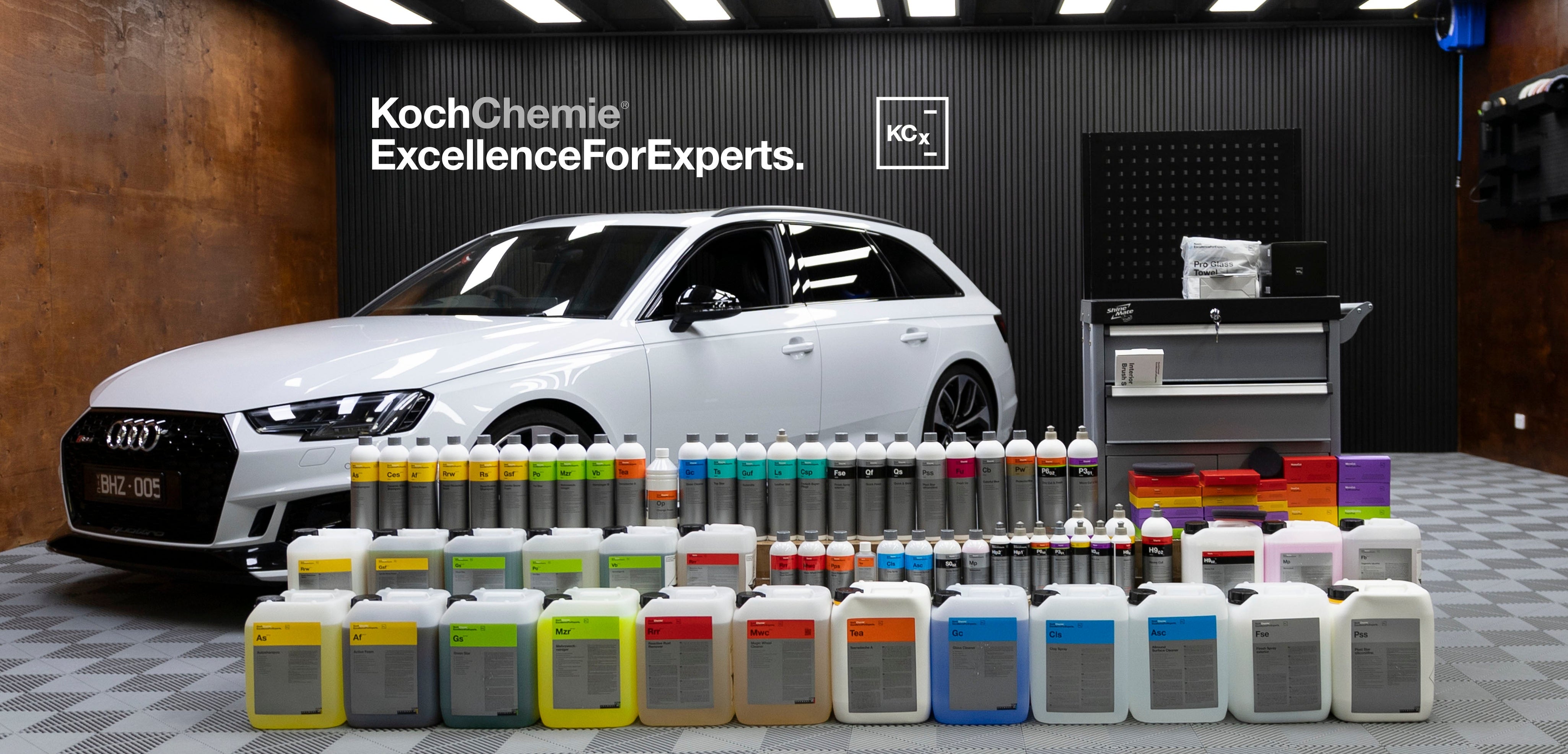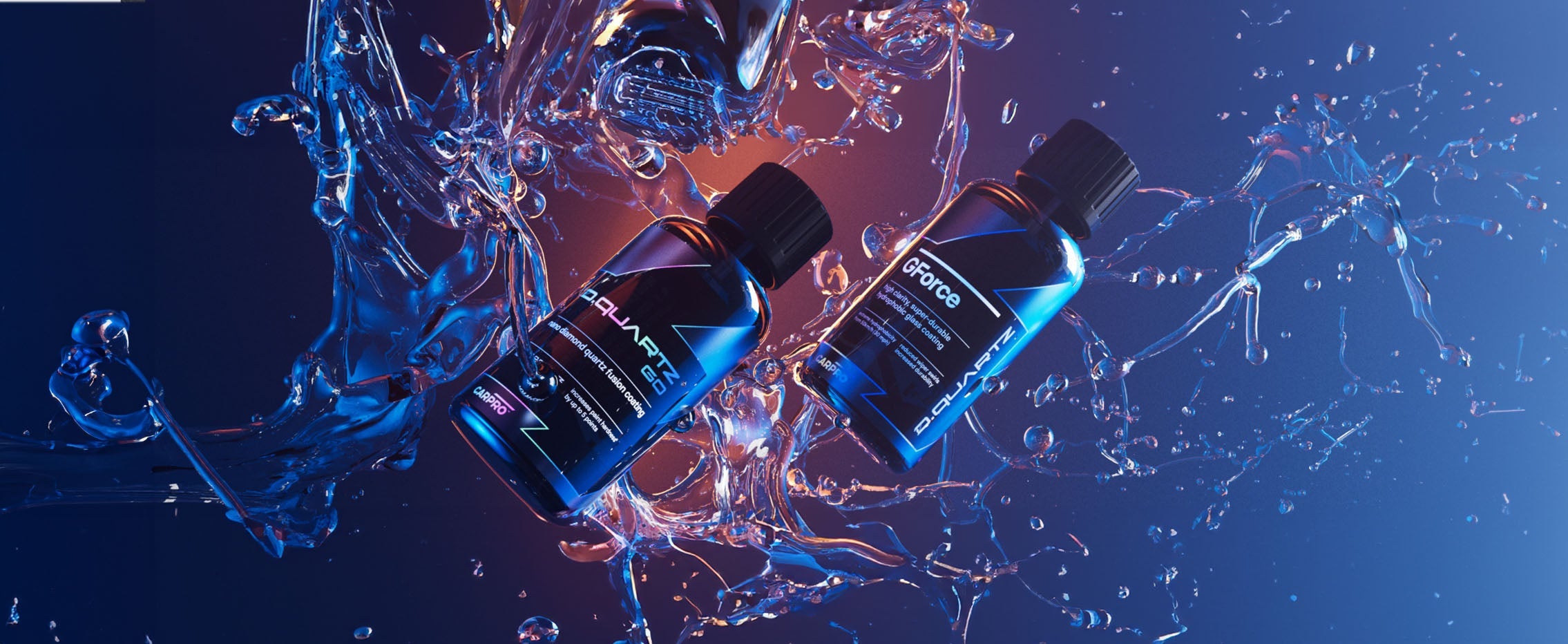It has long been thought that polishing a car by hand is easier and safer than machine polishing a vehicle, but is that really the case?
It is true that machine polishing a car requires an initial investment in a car polisher with some research and practice to get you going in the right direction, but that initial investment could be worth all the benefits that a machine polisher can unleash. It’s also important to note that consistency and uniformity is a key factor in obtaining good results when it comes to polishing automotive paint, and like it or not, we as humans are very inconsistent beings which carries on to how polishing paint by hand is carried out, rather inconsistently as a whole. A machine polisher on the other hand is very consistent in its motions and only alters its results as we influence it with our own techniques. So in other words, it’s extremely difficult to achieve a uniform result by hand compared to using a machine.
We are so fortunate to live in an information age where a mere online search can unravel copious amounts of information about any subject, including machine polishing which is far from being anything overly daunting and is without a doubt something that every car owner can learn quite rapidly and have success with. When used with just some basic understanding, machine car polishing can not only be a much faster way to polish a vehicle but it can also render far superior results with very little chance of damage to your car’s paint.
The old saying that it’s not about what you do but how you do it couldn’t be more appropriate when it comes to car polishing. Gone are the days when a rotary polisher, wool pad and some liquid sandpaper like compound was your only choice to polish your vehicle, which was honestly best left up to a skilled technician. However, with the massive advancements over the last decade or two, machine polishing car paint has never been easier, safer and more affordable for your average car owner to take professional-like results into their own hands. In most cases, car polishes and compounds contain certain abrasives that need to be broken down in order to achieve both good amounts of cut and finish in your results, and most car polishes are formulated to work by machine rather than by hand which additionally makes it quite difficult to adequately work these polishes and abrasives to their optimal level when working by hand.
 (ShineMate EX610 15mm Polisher)
(ShineMate EX610 15mm Polisher)
Rotary vs DA (Dual Action) Machines
With so many choices in relation to the types of car machine polishers available to suit beginners, intermediates and professionals with all sorts of needs, wants and skill levels, there is most certainly the perfect machine polisher to suit each and every individual.
When it comes to car polishers, there are really two main categories. Firstly is your traditional rotary polisher which uses a single forced (almost drill like) driven rotation, and for almost a hundred years, this was really the only option for machine polishing car paint. The benefit of a rotary polisher is that in the right and skilled set of hands it can be a fast, effective and efficient car polishing tool to address a variety of needs with success for automotive paint correction. However, it’s also important to understand that a rotary polisher has a long learning curve that is usually measured in many hundreds of hours if not years and does require a large investment in time and skill development to truly grasp its use and application with success. It’s also important to understand and appreciate that a rotary polisher can in fact be a safe and effective polishing tool in the right hands with proper technique and use, but in the wrong hands with a bad technique or little understanding, it can be detrimental to car paint if misused.
A rotary polisher in many ways can be looked at as the scalpel of machine polishers with its very precise and unforgiving implementation that requires a skilled surgeon to safely and effectively use it, but you would never want an unqualified user at its hands. About a decade or two ago, the automotive detailing world was introduced to the DA or Dual Action polisher which since its release has really changed the way detailers and the general public now view or can now address paint correction as a whole.
Unlike a rotary that just spins with a single forced rotation, a DA polisher has two motions, the first of which is a forced or gear driven oscillation movement that propels the machine’s backing plate to create a second free spinning motion, hence the dual action name which relates to its dual motion.
 (ShineMate Cordless Mini Rotary)
(ShineMate Cordless Mini Rotary)
The benefits of DA polishers over traditional rotary polishers are plentiful in many ways. First and foremost, it’s a far more user friendly machine to work with that has a far quicker learning curve enabling new users to grasp its technique at a much faster rate, usually after a mere few hours of use, compared to months and years by comparison to a rotary. Secondly, whereas a rotary has a more direct and focused paint correction ability with less forgiveness in both its user experience and results, a DA polisher more evenly and more forgivingly distributes its power on the surface of the paint due to its two motions making it far more easy to control and far more easy and safe to use and to obtain good results with a much lesser chance of damage occurring, especially for beginners starting out. Now that doesn’t mean that it’s impossible to damage car paint with a DA polisher, but it does mean that in the wrong or unskilled hands, a rotary can do far greater damage than an equivalent DA polisher.
Although a DA polisher is a more user friendly machine, it’s still used by extremely skilled detailers just as frequently if not more so these days than rotary polishers due to its many benefits. It’s simply impossible to perform a single stage correction using a rotary polisher without having holograms and buffer marks in the finish that will require at least a second if not third stage of polishing to remove. Whereas with a DA polisher, it is possible and even quite plausible to perform a single stage car paint polishing with great success in many cases, so it can be a far more efficient and time saving machine to use in many cases.
DA Polishers and the Benefits
To really understand the differences in DA polishers or which one is the best for you personally, it’s important to understand their orbital throw or gear driven motion.
When DA polishers first entered the market, they had extremely small orbit throws, as little as 1 mm or even less and up to 2 to 5 mm at most. This orbital throw is what propels the free spinning action which in essence is what is really doing the work, as without that spinning motion, a DA polisher that just oscillates will be extremely ineffective. As DA polishers progressed, we began to see larger 9mm, 12mm, 15mm and now even 21mm orbital throw DA polishers that are also mated to smaller 1, 2, and 3 inch backing plates as well as larger 5 and 6 inch backing plates. In essence, the larger the orbital throw a DA polisher has, the more powerful or aggressive it will be and the less chance it will have to stall its free spinning rotation. Though at the same time, it’s also important to note that the specific brand and model of machine can also influence its performance in these areas.
Additionally, larger throw polishers also tend to cause more vibration and may be slightly more difficult or uncomfortable to use compared to smaller throw DA polishers. But as a whole, larger 21mm throw DA polishers with the larger 6 inch backing plate size that accepts larger polishing pads do tend to be considered the work horses of DA polishers that are able to address more severe paint defects in a timely manner. By comparison, smaller 12mm polishers tend to be easier and more comfortable to use making them a great choice for beginners, together with the fact that they tend to be less aggressive and safer as a whole. Additionally, whereas larger throw DA polishers tend to be more effective at removing severe paint defects, they also don’t tend to finish as well particularly on softer paint, where by comparison, smaller throw DA polishers tend to have a little less cut but also tend to finish better by comparison, especially on softer paints.
 (ShineMate EX603 12mm Mini Polisher)
(ShineMate EX603 12mm Mini Polisher)
It’s hard for beginners to know where to start in relation to their first polisher due to the multitude of options available, and once you start to add polishing pads compounds and polishes to the equation it can become quite an expensive purchase in total. This is where a polisher kit such as the Shine Mate EX605 kit makes a lot of sense as you not only get one if the best beginners polishers that also used by professionals, but you also get some of the best accompanying compounds and polishes by world renown Scholl Concepts and multiple grades and foam polishing pads which is almost everything you need to get started.
As a whole, the 15mm DA polisher with the 5” backing plate is what is known as the detailer’s machine. It may have reduced cutting abilities compared to the 21mm DA and it may have reduced finishing abilities compared to the 12mm DA, but it tends to be a good all round DA polisher that finds a great balance of the two.
Additionally, there are many smaller DA polishers with 1” 2” & 3” backing plates and smaller orbital throws that can be fantastic for addressing the more intricate and hard to access areas on a vehicle. These polishers do tend to be considered as more specialty polishers for those that wish to take their results to the next level, but larger 5” & 6” polishers are really the standard and best place to start for your first DA machine polisher.
 (Waxit Enthusiast Polishing Kit)
(Waxit Enthusiast Polishing Kit)
Safe and Effective Polishing Tips
If there is one rule that supersedes them all when it comes to paint correction, it’s “always start with the least aggressive method”.
Technique plays a large part in using a car polisher and can ultimately determine how safe and effective you are during this process. Things like a higher machine speed will be more aggressive or effective at removing paint defects but it will also increase the risk of damage and potentially lower the standard of finishing qualities or gloss levels on the paint. Your downwards pressure can also increase cut, but it can also amplify heat leading to other issues such as damage or lowering finishing results. Arm speed is also an important one, as if you move the polisher too quickly it won’t have time to be effective, but also don’t want to move super slow as it will tend to generate too much heat. And you probably want to work in a general half meter square size on a panel at once, as this gives a nice balance of coverage and work time. The smaller the area, the more cut.
All in all, every paint and its defects as well as your environment is different, which is why we have the ability to adapt these techniques to best suit the particular situation, so the best way to decide which set of techniques is best for you is to always base it on the results that you personally see on the paint after doing a test section, and let that determine how you proceed whether it be more or less pressure, higher or lower machine speeds, faster or slower arm movements and so on.
A few quick points to remember.
-
Always ensure your pads are clean and maintained to get the most life out of them
-
Working in a clean environment can only do good for you and give you consistent results
-
Avoid using the same pad for the entire car. Pads and machines generate heat, and get expensive if you have to replace pads monthly
By comparison, machine polishing should be significantly faster, more effective, less physically demanding and render far superior results when compared to polishing by hand. Yes, it does take a little practice and an initial investment in a machine polisher, but used with just some basic understanding and techniques it could very well save you hours and hours of time and increase the value and appeal of your car making it a great investment in the long run.






